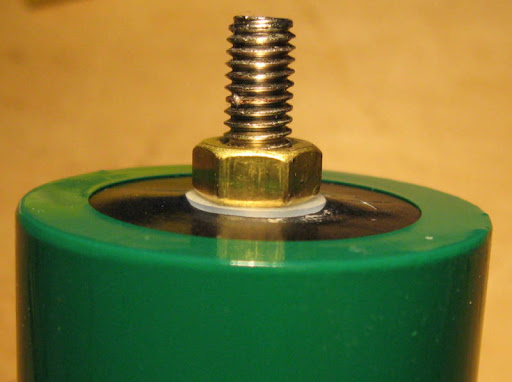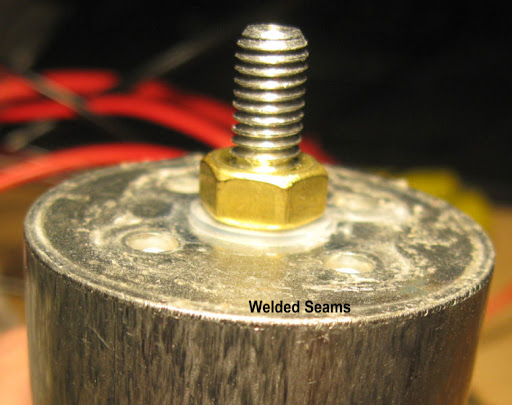Here's a closer look at a single 40138 cell. This construction seems to be fairly typical of other 40138 cells.
 The cell ends are covered with an adhesive label. There's an 'X' cut into each label that falls over the cell vent. There's a vent in each end of the cell. The rest of the cell is covered in a layer of shrink wrap plastic.
The cell ends are covered with an adhesive label. There's an 'X' cut into each label that falls over the cell vent. There's a vent in each end of the cell. The rest of the cell is covered in a layer of shrink wrap plastic. The body of the cell (tubing and end caps) is aluminum.
The body of the cell (tubing and end caps) is aluminum. Each end has a vent and four circular depressions. The depressions appear to be features of the end caps, which appear to be cast. The depressions are 1.47mm deep and the vent is 1.59mm deep.
Each end has a vent and four circular depressions. The depressions appear to be features of the end caps, which appear to be cast. The depressions are 1.47mm deep and the vent is 1.59mm deep. The joints between the body tubing and end caps are welded.
The joints between the body tubing and end caps are welded.I don't mind working with a bare cell on the bench, but it's important to ensure the cell covering remains intact in use. The cell can be shorted between positive and negative terminals like any other cell, but it can also be shorted between either terminal and the outer cell casing (aluminum body tube and end caps).
For example - this cell is fresh from the charger and is reading 3.557 volts between the positive and negative terminals. There is 1.074V between the positive terminal and the case, and 2.482V between the negative terminal and the case.
Whether you're making an electric bicycle pack or a battery for your electric trolling motor, mount the cells securely and isolate them from each other and any part of the battery pack that will conduct electricity. It won't take very many miles of e-biking to wear thru the shrink wrap.







